What and how we plant, grow or eat today is the benefit of curious minds over the years committed to answer the “what if” question. Think about it! The ability to buy bread rather than make it; the availability of fruit and vegetables anytime from anywhere; and the technology, instruments or utensils to plant or serve food did not just happen. Inventions over the years have changed our lifestyles without us having to think about the person behind the creation. From farm to fork, pioneers in science, engineering, farming, food science and nutrition have made our lives easier when their lives were often not. Salute to our Black scientists over the years who sought to solve, not ignore, obstacles as their curious minds forever changed the way we eat.
The Contributions
From healthy soil to food safety — with a few fun inventions in between — here’s a glimpse of the contributions by some of those curious minds:
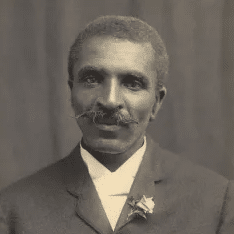
Source: Frances Benjamin Johnston [public domain], via Wikimedia Commons
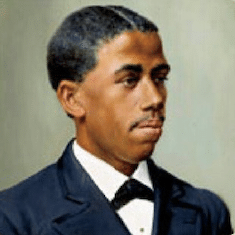
Source: Amsterdam News
Manual Labor to Mechanical — Sustainable farming practices were the brainchild of George Washington Carver in the late 1800s, but Henry Blair helped the efficiency of farming earlier in the century with the invention of corn and cotton planters. The horse-drawn inventions allowed farmers to reduce the time to plant crops, improve corn and cotton yields, and control weeds. Blair’s lack of a formal education and his inability to read did not stop him from seeking solutions to problems. He was just the second African American to hold a U.S. patent.2
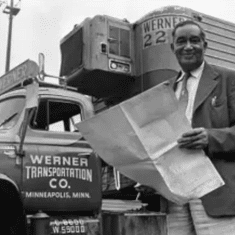
Source: Minnpost.com
“Fresh “Beyond the Backyard — Today’s availability of fresh fruit, vegetables and meats anytime from anywhere is the result of the mechanical skills and inquisitive mind of Frederick McKinley Jones in the early 1900s. Born in 1893, Jones’ early childhood challenges of being orphaned at age seven and quitting school in the sixth grade did not deter him. He found ways to hone his skills as an auto mechanic at an early age in his hometown of Cincinnati before moving to Hallock, Minnesota, at the age of 19 to work on a 50,000-acre farm. Jones served in World War I where his mechanical skills were discovered. From his continuous “on the job” education, his inventions flourished, leading to the creation of a range of items from sound equipment to air-conditioning. He holds 61 patents with the majority in refrigeration technology. His greatest contribution to our everyday life was the 1935 invention of an automatic refrigeration system for long distance land transportation, which was adapted over the years to planes and ships. He became the co-owner of The Thermo King Company and was the first African American to be awarded the National Medal of Technology and Innovation (posthumously).3, 4
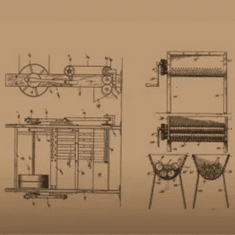
Source: blackinhistory.tumblr.com
Bread on the Shelf — Baking bread became a pandemic phenomenon but thanks to Joseph Lee, we normally do not have to rely on our own baking skills for our daily bread. Born in 1849, Lee’s long career in foodservice, from working in a bakery as a child to hotel management and master cook in his adult years, opened his eyes and curious mind to solving food waste and preparation problems. In 1895, Lee received a patent for a device that turned the previously tossed day-old bread to mechanically torn breadcrumbs. Seven years later, he invented an automatic bread making machine that changed the bakery world forever. His machine is the foundation for all modern-day bread makers and an invention that earned him two patents.3

Source: Caliplate
Even though biscuits are not a staple today, the invention of a spring-loaded biscuit cutter in 1875 by Alexander P. Ashbourne was a welcomed addition to any kitchen — large or small. The quality and quantity of biscuits were noted as a success and earned him a patent. That same year, Ashbourne also received a second patent for treating and refining coconut oil.5
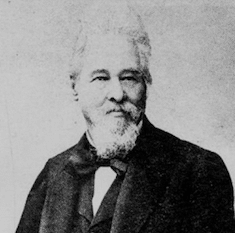
Source: National Inventors Hall of Fame
Sweet Treats and Salty Snacks — From creating a better method to produce sugar to serving sweet treats like ice cream, the inquisitive minds of Black scientists in the 1800s met the challenge. Norbert Rillieux, born free in New Orleans and trained in France, is considered one of the earliest chemical engineers. Using his thermodynamics training, he invented an evaporator that produced a higher quality sugar from cane juice. His invention not only increased production efficiencies and reduced costs, but more importantly, improved the quality of life for workers.3
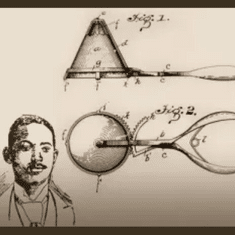
Source: blackinhistory.tumblr.com
And though small in size, we also need to recognize the ice cream scoop, which was invented by Alfred Craelle, the first African American in Pittsburgh to receive a patent.5
If you prefer salty snacks, you can thank George Crum for for creating the potato chip. Crum created the snack in the mid-1800s in Saratoga Springs, New York, at Moon’s Lake House.
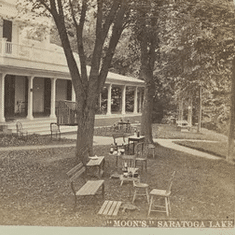
Source: Joki Collection, Saratoga Room, Saratoga Springs Public Library
According to history (still disputed at times), the chips were created out of spite. When one of George’s customers kept complaining of his French fries being too thick, Crum sliced his potatoes paper thin and deep fried them. The result: satisfaction that has remained for centuries. 5, 6

Source: Black History Mini Docs
Food Safety — While other colleagues were developing equipment to preserve food, Lloyd Augustus Hall was creating food preservation techniques using natural occurring chemicals like sodium chloride (salt) and lecithin, which are still used today. Born in the late 1890s, Hall discovered that food spoilage could be prevented with the use of various sodium crystals and combinations, and lecithin was the catalyst to keep fats and oils stable and safe on the shelf. Hall also invented a vacuum chamber method to keep foods free from bacteria and molds. He is recognized as one of America’s top food scientists.3
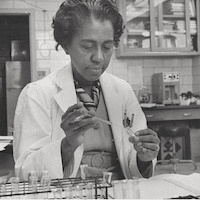
Source: Archives of the Albert Einstein College of Medicine, Ted Burrows, photographer
Heart Health — Food safety is the first step to healthy food but what we eat is the catalyst to our personal health. Marie Maynard Daly conducted early studies on heart health. Born in 1921 in New York, she was the first African American woman in the United States to receive a PhD in chemistry. However, her research on the effects of sugars and other nutrients on heart health, and the relationship of food and diet outweighed the significance of her degree. Her research was groundbreaking and served as a foundation for heart health research.3
A Glimpse in History
It is often said that “It takes a village” to raise all of us. Reflecting on the contributions of the scientists highlighted above confirms that sentiment in my mind. From farming practices to food production, what we consider “routine” today is the result of curious minds from years ago; curious minds, that regardless of education level, ethnicity or economic status, sought to find ways that improved the lives of those around them. May we be reminded that the contributions of so many from different backgrounds allow us to enjoy a variety of safe and healthy foods across the globe.
References
1. “Give Credit Where Credit is Due! George Washington Carver Understood Sustainability,” by Marianne Smith Edge, February 2, 2021.
2. “Black History Month: These African Americans fueled farming,” AGDAILY, February 1, 2021.
3. “8 Black Scientific Pioneers Who Forever Changed Food,” Institute of Food Technologists’ Brain Food Blog, February 15, 2021.
4. Frederick McKinley Jones, Wikipedia.
5. “7 African Americans who changed the way we cook and eat,” Caliplate.
6. “George Crum, Inventor of the Potato Chip,” ThoughtCo., by Tuan C. Nguyen, Updated February 3, 2020.
Note: For more insights on George Washington Carver read my February 2021 blog about him.
